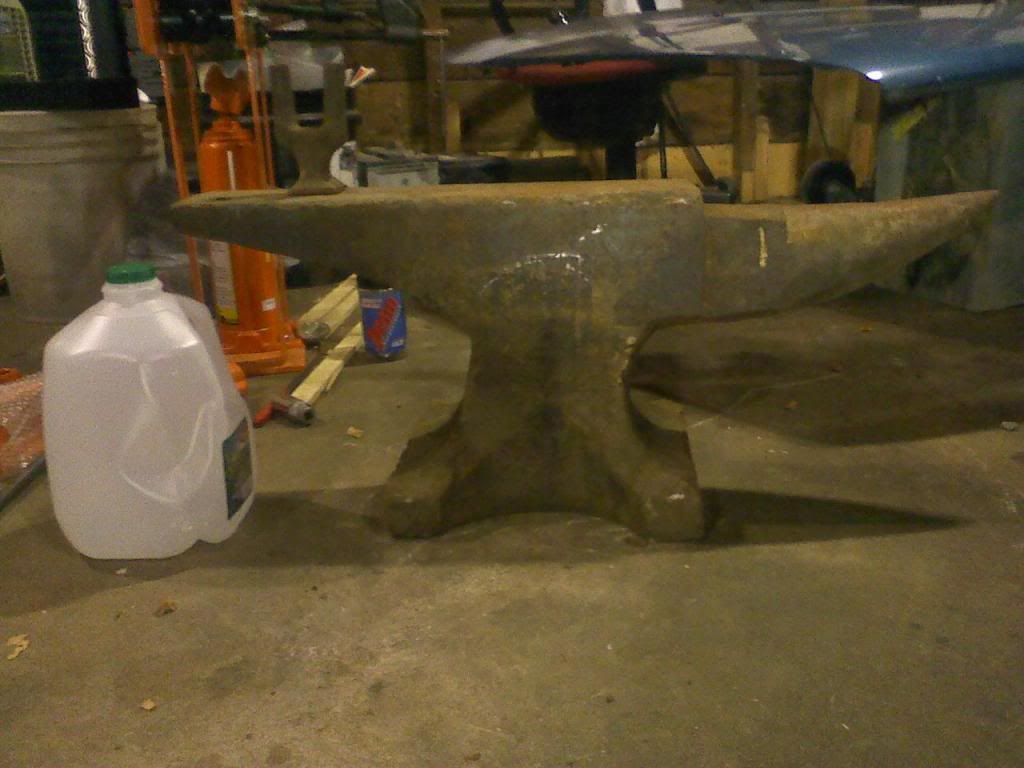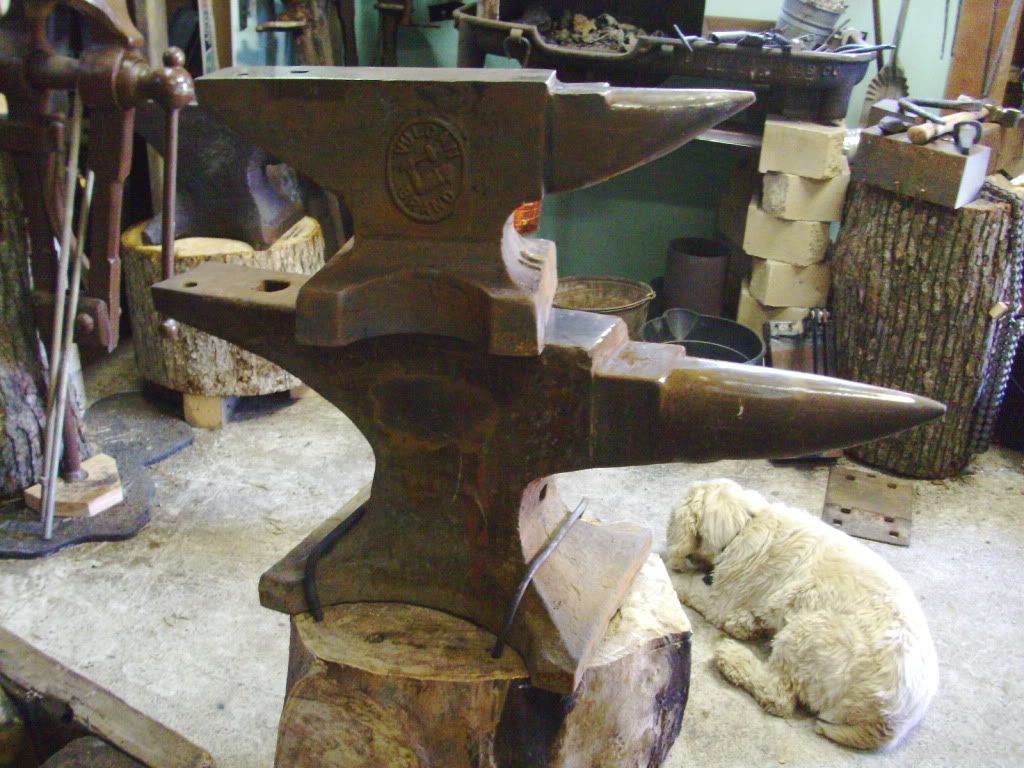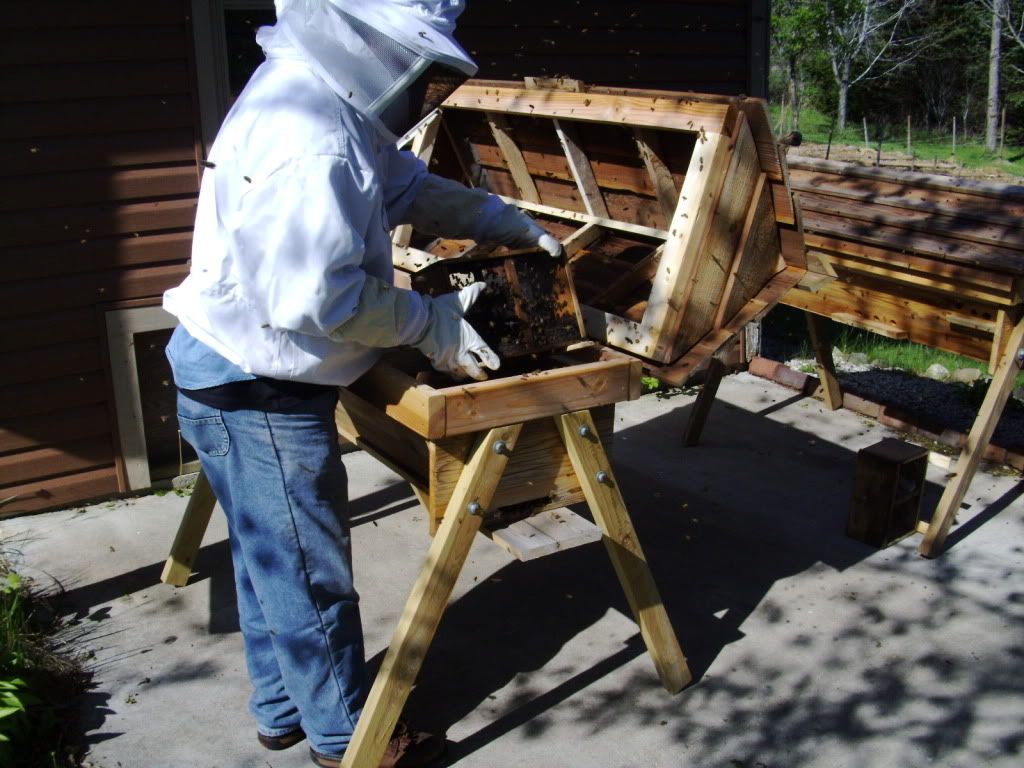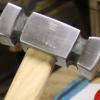-
Posts
105 -
Joined
-
Last visited
Content Type
Profiles
Forums
Articles
Gallery
Downloads
Events
Posts posted by FordPrefect
-
-
Thanks Curly, I cant wait to meet you in person at Stan's hammer in.
-
Thanks Phil, when I visit my friend Mark I will find out what his Trenton anvil, S/N and weight is, just for cross reference.
-
Yes, Phil my brother in law Bill got a nice deal, the anvil has a nice face, he is cleaning it now...the numbers what does T205 and A73130 or A73430 not sure what third digit is, would like to know what year it was made and how heavy it is?
-
Thanks Phil, and yes all the equipment in this shed gets used very often. My brother in law is building a power hammer, my friend Mark will weld everything, so we will have a working power hammer in few weeks and the shop will be ready for full operation.
-
This anvil, the Trenton above actually looks bigger then my Mousehole, but not as heavy as Mousehole, no markings on my Mousehole, and I paid $450 for the Mousehole.
Here is my Mousehole on it's new stand:
and of course do not want to forget to show people my friends Marks 150+ pound Trenton anvil, that Mark stole for a measly $35.
and once again my brother in laws Trenton:

-
Here are the numbers we found on the bottom of the foot, which consist of three pictures left, centre and right:



-
My brother in law just got a nice clean 150+ pound Trenton anvil from Craiglist Milwaukee, yesterday for $225. We can't make out all the numbers on the anvil, but I have few pictures and few numbers.




-
Grundsau,
That is the first time of me using VSH bees, I usually get Italian bees.
I loaded four hives today, I got a call to pick up the bees, so I had to load the bees today:
-
I am expending the number of hives to 10 hives and the bees I am getting this year are these: http://www.glenn-apiaries.com/smr.html
-
I have 8 hives, plus 2 nucs...2 are TBH and the others are Langstroth hives, I am using plasticel with bees wax sprayed on and cells started, my bees love it, mice can't desert it, when in storage.
I use custom frames with no foundation in TBH, makes it easy to harvest honey.
Here are some pictures of the TBH: http://s1138.photobu...Za/Topbar hive/ -
I use a Brent Bailey's centre punch, drift and chisel tools, as well as hammers, the technique is what it is, centre punch first, chisel, then drift, in that order, not sure who perfected the technique I use, but works great for me, I adopted it to fit my needs, my style of blacksmithing, my physique...so any new way of learning is appreciated as well as tool design, I would like to thank all that contribute on IFI and promote blacksmithing, thank you. P.S. I would love to spend an hour with Brian Brazeal, sign me up.

Thanks for the video, FieryFurnace. -
One more piece of art work, what can you say.
-
I use a 6# cross pien, a 3# rounding, a 2.5# Hoffi style, a flatter a 5/8" fuller, and a 12# sledge with a straight pien...well here is the picture of few of my hammers.



-
Wow, that is one gorgeous knife!
-
That is a gorgeous knife.
-
Great job Trip, not make something nice, and send it to me...lol.
-
Local Historical Societies are a very good source of information on blacksmithing, smiths, smithies, and any existing historic structures related to blacksmithing, smiths, and smithies.
-
Sam, I ordered this book on your recommendation, I believe that was the last copy on Amazon.
-
Tim, nice little smithy.
-
I might pick up lathe, I will make my own tools as well, both for metal spinning and wood carving or making patterns. I want to make some cool stuff, and try etching and engraving on the finished product.
-
Mark,
You will need at least five tools or spoons, the more spoons (you should be able to make these out of tools steel) the more intricate work, you can do in copper, brass and aluminium, and stainless steel which is much harder, but with practice can be done. You need some soap for lubrication.
You will also need to make a pattern in wood of the object or piece you would like to make...let me see if I can put together a basic requirements, with few pictures to help you out.
A brass vase spun by hand. Mounted to the lathe spindle is the mandrel for the body of the vase a shell sits on the "T" rest. The foreground shows the mandrel for the base. Behind the finished vase are the spinning tools used to shape the metal.
You can see the wood patterns made for various parts being made in the above picture.
Actually here you go, this web site explains everything, including describing the tools needed.
http://www.metalspin...l_spinning.html -
Basher,
Thank you for the details, for the beginners this is great, it helps in preparation, thank you. Your axe designs are great, simple but great looking, I love that finish as well. -
The way I see it as a beginner blacksmith, use the metal you are most comfortable in using for what ever you want to make, perhaps staying with one type of metal till you master the basic forging techniques and HT techniques for that particular metal, this is my approach to learning. Adding different metal types till you exhaust all basic metal types (1018, 1045, etc.) will add to your knowledge base, this will be used in the future to work unknown metals or junk yard metals, if so desired. This is what works for me, otherwise there is always trial and error, hands on, with figuring out unknown metal properties, which is also a desired element and which should be a part of the learning curve.
Having the ability to ask a full time working blacksmith a question on a on any step in a forging process is priceless, thank God for IFI, for those of us working hobbyist that do not have time to take classes, this is a time and money saviour. Thank you guys, and you know who you are since you answered so many question, and at times repeated questions, I am sorry for repeated questions but some of us learn by repeating over and over till it sinks in (I think it has something to do with age).
Thank you IFI. -
Basher,
I love the axes, incredible workmanship, maybe just add few words on how you made at least one, from point one from selecting metal to finishing and HT, thanks in advance for sharing.
Here is one more I really fell in love and will attempt to make soon:


Found a nice Trenton anvil on Craigs List
in Anvils, Swage Blocks, and Mandrels
Posted
Thanks all, Frosty my brother in law just beat the collectors and the resellers to punch on this one, Curly (I will see you at Stan's this year).